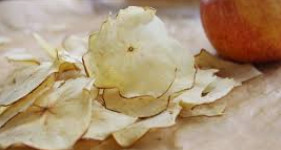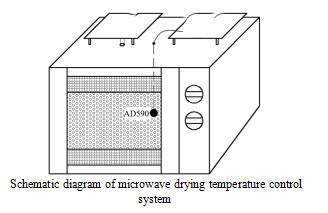Effect of different drying methods on the quality of apple slices
Abstract: Different drying methods have different effects on the quality of apple slices. The effects of three methods of common hot air drying, far infrared drying and microwave drying equipment on the quality of apple slices (VC content, total acidity, rehydration and sensory quality) were discussed.
The test results show that: microwave drying has the least influence on the quality of apple slices, followed by ordinary hot air drying, and far infrared ray drying has the greatest impact on the quality of apple slices; comprehensive consideration of VC content, total acidity, rehydration and sensory quality in apple slices Variation, microwave drying in the three drying methods is a suitable drying method for apple slices.
Key words: apple slice microwave drying; hot air drying; far infrared drying

Apple is one of the largest fresh fruits in China. According to statistics, China's total apple planting area is nearly 2 million hm2, with an annual output of 22 million tons of apples, accounting for 50% of the world's total output. It is the world's largest producer. China's apple industry has obvious advantages. At present, it has formed three major apple producing areas in the Bohai Bay apple producing area, the northwest apple producing area and the central apple producing area.

China's apple production is large, except for some fresh food, most of the apples are used for processing. At present, there are many products processed by apples, such as applesauce, apple juice, apple slices, etc. Among them, apple slices are a kind of snack food processed on the basis of maintaining the original quality of apples. Due to the neat appearance, the taste is crisp and sour. It is moderately sweet and contains no pigments and preservatives. It is very popular among people and has become a high-grade snack food that is popular today.
In the production and processing of apple slices, the drying process has a great influence on its quality. At present, drying methods widely used in the food industry include ordinary hot air drying, vacuum freeze drying, adsorption freeze drying, microwave drying, and far infrared drying.
Due to the high cost of vacuum freeze drying, this paper only discusses the effects of common hot air drying, far infrared drying and microwave drying on VC content, total acidity, rehydration, water content and sensory quality of apple slices. A suitable method for making apple slices to guide actual production to meet the demand for high quality apple slices.
Different drying methods have different effects on the quality of apple slices. The results show that: microwave-dried apple slices are better in terms of VC content, total acidity, dryness, rehydration rate, water content after rehydration, and sensory indicators. As a result, and basically maintain the original flavor quality of Apple.
The effect of hot air drying on the quality of apple slices is almost the same as that of microwave drying test; the quality of far infrared dried apple slices is the worst among the three methods. Therefore, in the processing of apple slices in the food industry, in order to obtain high-quality apple slice snack foods, microwave drying and hot air drying should be adopted, and far infrared drying is not suitable.